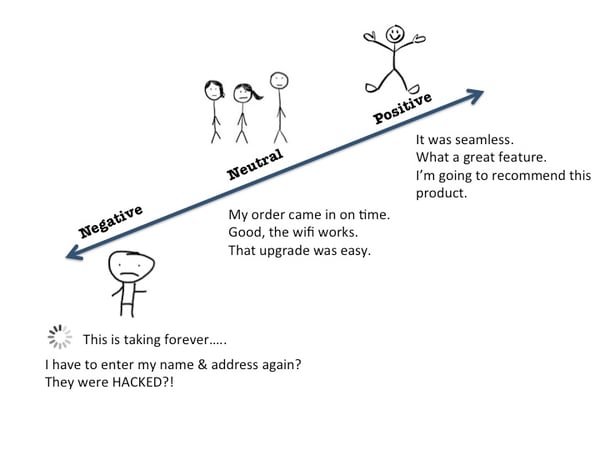Published on
The Differentiating Value of Technology

As CIOs work with their internal partners and IT teams on strategic planning and the daily operational ‘blocking and tackling,’ they should consider where current technology stands as to negative, neutral or positive differentiation. Customers no longer just use technology; they experience an organization via technology.
There are three types of differentiation customers can experience as a result of technology:
1. Negative
Technology that is absent, broken or limited. The most prevalent example is poor reliability of networks or applications that are down, degraded or insecure. These will create poor perceptions not just of the technology but the organization. Response time expectations are getting shorter and shorter, and even split-second delays can cause customers to go elsewhere. Ignore gaps in the technology portfolio that are negative differentiators at your organization’s peril.
2. Neutral
Technology in this space doesn’t particularly differentiate your organization, but if you don’t have it, you’re disadvantaged in comparison to the competition. Technology moves from innovative to obsolete at an escalating pace. CIOs don’t want to wake up one day and find the competition has implemented technology to such an extent that it’s expected — and their organization is lacking. It wasn’t long ago that the existence of mobile applications was considered leading edge. Not anymore; people expect to go to their mobile device and interact with your organization. People also expect that when approaching (or being approached by) your organization, whether in person, via phone or digitally, you know who they are and can customize their experience. For most organizations, the bulk of the technology portfolio is probably in this space.
3. Positive
Innovation lives here, but not for long. Wearable technology, ultra-fast broadband and home automation are a few examples. CIOs should be thinking about which of the plethora of innovations could be positive differentiators for their organization, and move to implement before the competition applies it to such a great extent that it moves into the neutral zone. The challenge here is to prioritize; avoid the trap of trying everything but not implementing anything.
CIOs and their teams need to partner with their business counterparts to correctly identify where technology sits along the differentiation scale to ensure enhancement of, not damage to, the customer experience and ergo the brand.

Originally published at http://cio.unh.edu/2014/04/24/the-differentiation-scale/
Author Perspective: Administrator



